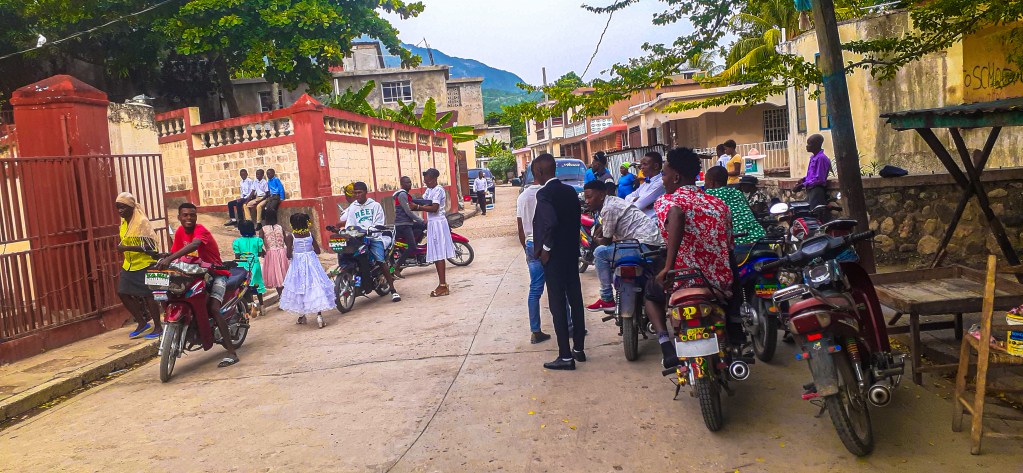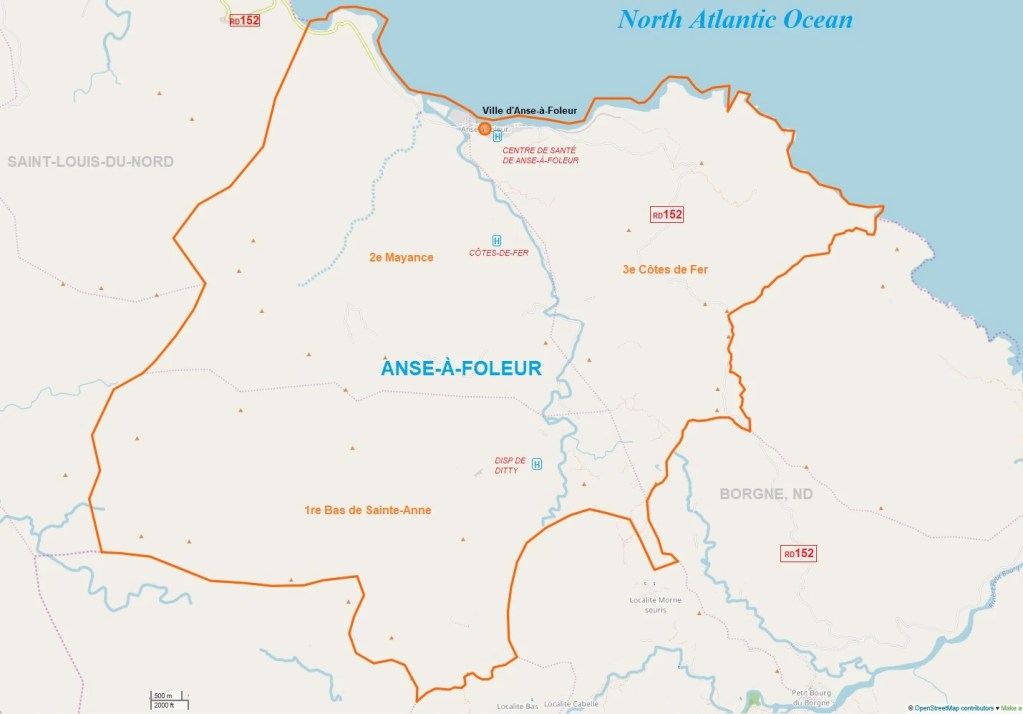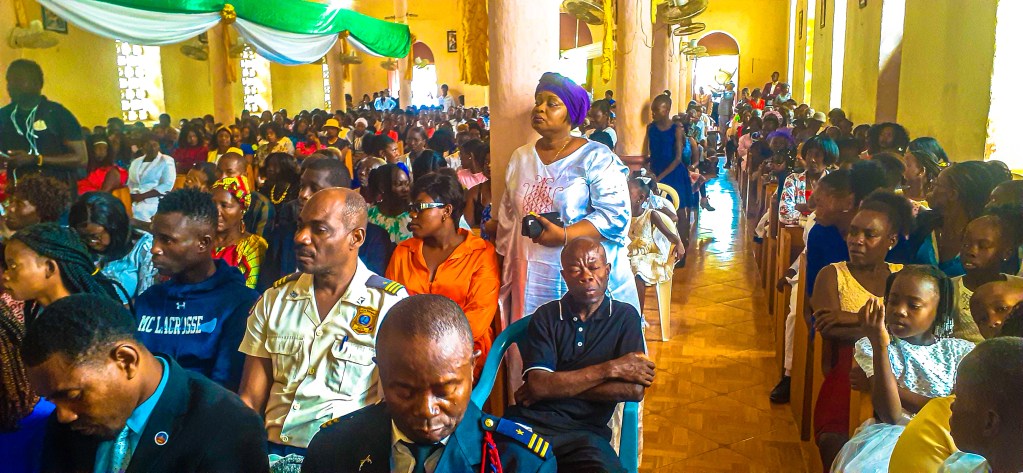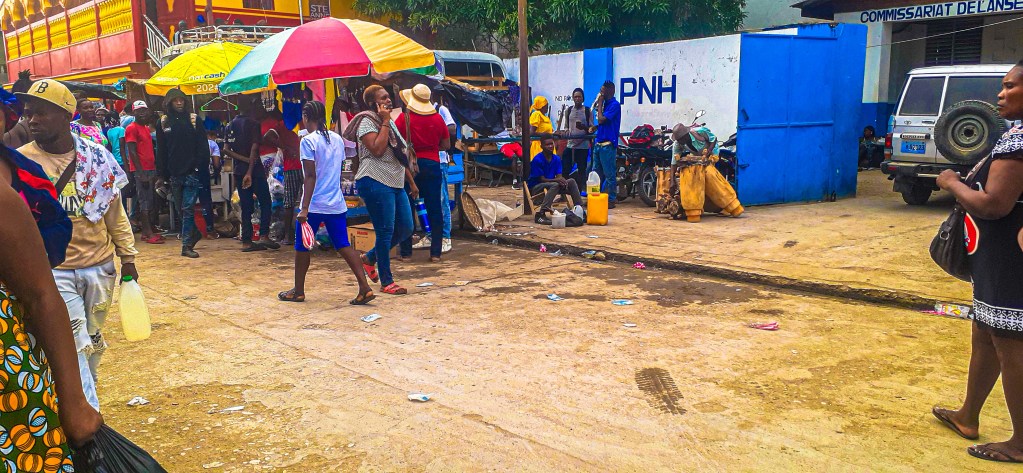Auditeurs:
Meilleurs auditeurs :
-
 play_arrow
play_arrow
RADIO DROMAGE
 Bloc Party - Helicopter
Nothing much really
Lucy Harty
Bloc Party - Helicopter
Nothing much really
Lucy Harty
 Chase Rice - Ready Set Roll
Are we on air???
Roy Yellow
Chase Rice - Ready Set Roll
Are we on air???
Roy Yellow
 Annoying Orange - Party Rock
You know I come to party hard!!
Annoying Orange - Party Rock
You know I come to party hard!!


PORT-DE-PAIX—Anse-à-Foleur, also called Ansafolè in Creole—Fools Cove in English—is one of the oldest communes in Haiti today. In 2025, it will celebrate its 140th anniversary as a commune.
Anse-à-Foleur is situated on the Atlantic Coast and is the easternmost tip of the Northwest Department. Out from its city center, the large plains encircled by mountain foothills and a serene beachfront make the area a pristine location. Its northern shore is marked by a bay, where its main river—Rivière Anse-à-Foleur—flows. Nicknamed the “mystical city” by visitors and pilgrims, Anse-à-Foleur is a point of destination for those seeking miracles of all kinds.
The town is located on the side of a steep hill that overlooks it, between a significant river with threatening floods and a very rough sea during the rising tides. With a population of about 35,000 people, most of Anse-à-Foleur’s three communal sections — Bas de Saint-Anne, Mayance and Côtes-de-Fer — are in coastal areas with fresh climates, including two main rivers, six springs, two ponds and two lagoons.
Additionally, it is geographically bordered by the Atlantic Ocean to the north, Borgne to the south and east and Saint-Louis du Nord to the west. At its closest point, Anse-à-Foleur is about 10 miles from Île de Latortue (Tortuga Island). It is approximately six miles east of Port-de-Paix, the capital city of the Northwest Department, which is about 132 miles north of Port-au-Prince, Haiti’s capital city. Sitting about 66 miles west, Anse-à-Foleur is relatively close to Cap-Haïtien, the main city of Haiti’s North Department.
Despite being close to most major cities in northern Haiti, dangerous road conditions isolate the town. The road connecting Carrefour Joffre to Port-de-Paix looks long because of its poor state. However, recent regular flights by Tortug’air have helped alleviate this issue a bit.

Above all, the following are some essential facts to know about Anse-à-Foleur:
Historical significance
Anse-à-Foleur has a rich history and played an important role in the Haitian Revolution. Its location made it strategic for the freedom and independence fighters against the European colonial empires, particularly France, Spain, and England. Runaway slaves would use the mountaintops as hideouts to attack plantations and slave owners. They would poison the rivers, which they also used as shields.
Cultural diversity
Anse-à-Foleur, renowned for its vibrant festivals and abundant cultural heritage, is home to a diverse population that includes Afro-Haitians and remnants of the Indigenous Taino people. The town’s annual feast—the Ti Sentàn (Little Saint Anne) festival- is also celebrated with the Catholic saint of the same name every July 26.
Much of the city’s cultural identity reflects its role as the site of the local replica of Jerusalem‘s Temple of Solomon, which features the Sainte-Anne, the town’s patron saint. Pilgrimages to the patron saint draw many from the other regions of the country and also the diaspora.
Visitors know Anse-à-Foleur as being a point of attraction for thousands of people looking for miracles, wealth, healings, weddings, trips, immigrations, chances, vengeance, bonuses, 4-digit lottery wins, promotions, advancements, releases from prison, trial to win, and more.
In the commune, there are 10 churches representing various religions. Christianity is the predominant faith followed by the locals, with Catholic churches being the most common at 30%, followed by Adventist temples at 20%, with the rest belonging to other denominations, notably Baptist.
The residents of Anse-à-Foleur adhere to the officially recognized faith of Christianity. However, like in many other Haitian towns, Vodou practices are also present. Within the village, there is a Vodou temple with intricate corridors, and outside, there is a fenced area with a pond filled with murky water up to mid-calf level. The pond serves the purpose of cleansing sins, a concept rooted in Christianity.
This blend of Christian and Vodou traditions underscores Haiti’s unique spiritual landscape, where faith and culture intersect in profound and sometimes surprising ways.
“I know [people of] Protestant faith who come to Ti Sentàn so they can perform miracles in their churches. They are all considered false prophets because when they work, it is Ti Sentàn who guides them,” Lucson Jean, a resident, said, referring to pastors of other faiths.
Mystical and mythical places where people usually year-round seek miracles include Basen Manman Jimo (Twin Mom Basin), a waterfall, Mèt Ajinse (Master of Trouble Makers), Repozwa Sentàn (Saint-Anne Lounge), Demanbre Sentàn (Sainte-Anne Establishment), Charitab (Charitabe) and 21 Nasyon (21 Nations).

Agricultural natural landscape
Anse-à-Foleur is characterized by its mountainous terrain and is home to mangroves. Despite its relatively low level of development, some consider Anse-à-Foleur a place of great potential for Haiti.
The region remains untouched by industrialization, thus preserving its abundant fauna and flora. It is renowned for its agricultural productivity. Despite its rivers, there is no organized or controlled irrigation system. Farmers rely heavily on rainfall to grow various crops such as sugarcane, plantains, bananas, yucca, yams, potatoes, rice, sorghum, and beans.
The area is also known for producing coffee, cocoa, cotton, exquisite woods, honey, tropical fruits and livestock.

Export of goods is made possible through Port-de-Paix and Cap-Haïtien, although there are ports in Anse-à-Foleur that remain virtually unexploited for foreign trade.
Beyond agriculture, Anse-à-Foleur’s economy depends on fishing, trade, mining and quarrying, and crafts.
Basic services and facilities
Like many areas in Haiti’s provinces, Anse-à-Foleur lacks reliable infrastructure, including transportation, education, healthcare, and utilities.
The commune is connected to Port-de-Paix by Route 501 and to Port-Margot, North Department, by Route 117. Anse-à-Foleur is hard to access by car because of its steep incline and bad roads. The streets are made of earth, sand and stone.
The Ministry of Public Health and Population is not represented in Anse-à-Foleur. However, there is a public health center with one bed and a medical staff consisting of an intern doctor and five nurses. Other healthcare options are limited to either an arduous journey to find a clinic outside of the city or an indefinite wait for a mobile healthcare unit to occasionally arrive.
Additionally, the community lacks essential economic facilities like a gas station, private morgue, or bank. However, there is a police station in the town. Four pharmacies and six photo studios are also available to cater to the community’s needs.

Private initiatives help to light up the city with electricity. Electricité D’Haiti (EDH), the state-run electricity company, has long been dysfunctional. Residents and diasporic organizations have installed solar-pannel streetlights in different areas of the communal territory. Those who can afford to acquire generators, inverters, and solar systems for energy in their houses.
For communications, Anse-à-Foleur uses Digicel and Natcom networks, the country’s two main telephone companies. Over 70% of the population has access to a mobile phone, and the town has a radio station and a monthly newspaper magazine. However, it does not have a television station.
In the area of education, the commune has a School Inspection office representing the Ministry of the National Education of Youth and Sports. There is a preschool, 13 primary schools, private and public, a high school, and three literacy centers.
A town of warm hospitality
One of the most memorable aspects of a visit to Anse-à-Foleur is the warm welcome from its people. Visitors are usually welcomed with open arms and experience the genuine kindness and generosity of the locals, making their stay truly unforgettable. The town’s inhabitants are concentrated on the Saint-Anne public square and on the town’s main street, particularly in front of the Ti Sentàn courtyard, which is considered by many to be a highly mystical place.
The city center is a mixed residential and commercial area with very peaceful neighborhoods like Trois-Carrefours (three corners), Ligros, and Belair.

The best months to visit the commune of Anse-à-Foleur are January, February, June, and December. Most afternoons, people gather under the shade of fruit trees, coffee, and cocoa to socialize, play cards and dominos, and tell stories.
The post Haiti’s northwest mythical coast Anse-à-Foleur to celebrate 140 years appeared first on The Haitian Times.
Haiti’s northwest mythical coast Anse-à-Foleur to celebrate 140 years was first posted on August 4, 2024 at 7:43 pm.
Écrit par: Viewcom04
Articles similaires
Articles récents
- DHS offers $3,000 holiday stipend for undocumented immigrants who voluntarily leave the U.S.
- Fear grips Haiti’s northwest as gangs push violence beyond the capital
- Carel Pedre arrest stems from ‘buttcrack’ image girlfriend posted, authorities say | Exclusive
- La Fédération haïtienne de football interdit tout usage non autorisé de ses logos et marques
- La PNH déjoue une tentative d’enlèvement à Delmas 31, un kidnappeur abattu et un agent de sécurité tué
Commentaires récents
Aucun commentaire à afficher.-

Soirée Relax
Avec Radio DROMAGE
For every Show page the timetable is auomatically generated from the schedule, and you can set automatic carousels of Podcasts, Articles and Charts by simply choosing a category. Curabitur id lacus felis. Sed justo mauris, auctor eget tellus nec, pellentesque varius mauris. Sed eu congue nulla, et tincidunt justo. Aliquam semper faucibus odio id varius. Suspendisse varius laoreet sodales.
close Chart
-
1
play_arrowYo Dim Sa
K-Dans
-
2
play_arrowBiznis Pam
Djakout #1
-
3
play_arrowJere'm
Harmonik
-
Top popular

Le gouvernement haïtien définit ses priorités pour le prochain budget
Processus électoral : le COSHARCO et la CSH accusés de favoritisme

Hubdemy, une plateforme de cours en ligne lancée par des étudiants et professionnels haïtiens pour booster l’éducation
Flashback | Bombardopolis-Haïti, terre d’accueil pour Johannes Drumpft, l’arrière-grand-père de Donald Trump
Pafwa




